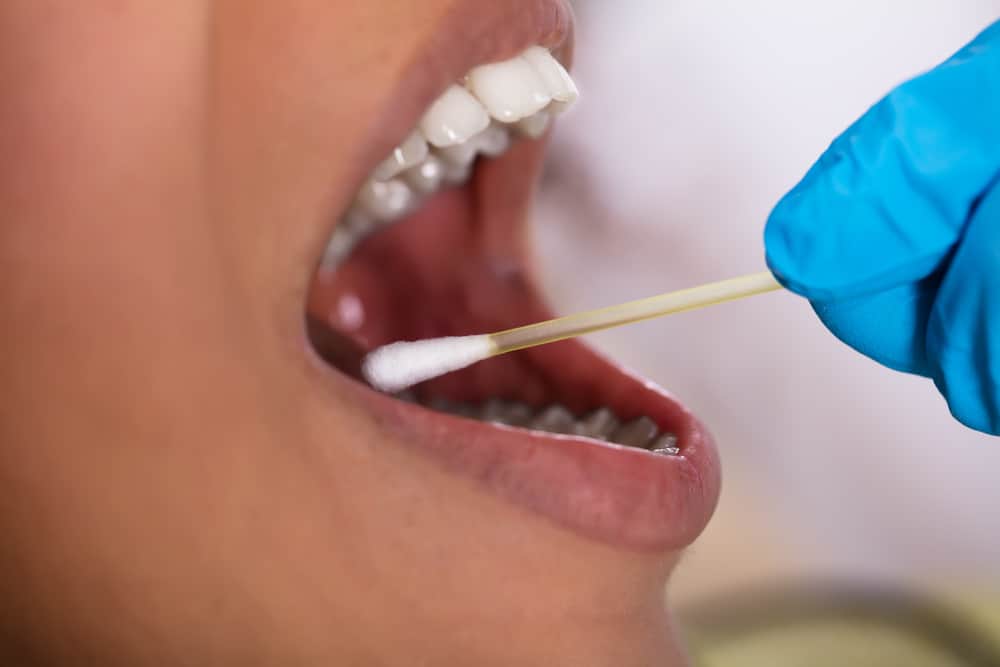What is Gum Disease?

Your mouth hurts every time you eat, and your gums bleed whenever you brush. Worst of all, you’ve lost a tooth and now wonder if you’re going to need dental implants. What is going on? There’s a good chance you’re suffering from gum disease. If you haven’t talked to your dentist about it, now is the time.
Table of Contents
What is gum disease and how do you make it go away? Here’s what you need to know.
Understanding Gum Disease

When plaque and tartar get under the gum line, pockets and spaces are formed where bacteria can grow and thrive. Left untreated, this can lead to gum disease. There are three stages of periodontal disease:
- Gingivitis: Gum inflammation preceding gum disease. Not all gingivitis turns into gum disease.
- Periodontal disease: Gum infection characterized by bleeding gums and painful chewing.
- Periodontitis: Advanced gum disease that can lead to tooth loss. Periodontitis impacts 47 percent of Americans over the age of 30.
Causes and Risk Factors

- Smoking
- Diabetes
- Hormonal shifts such as menstruation, pregnancy, or menopause
- Certain medications
- AIDS and the related medications
- Genetic predispositions
- Crooked teeth that are hard to clean
Smoking can also make correcting gum disease even more difficult. Work with your dentist in Phoenix and doctor to quit smoking for better overall health, including keeping gum disease at bay.
Symptoms

- Bad breath that doesn’t go away after you brush or floss
- Gums that are red, swollen, tender, or bleeding
- Pain while chewing
- Receding gums
- Sensitive teeth
- Loose teeth or teeth that fall out
If you notice even one of these symptoms, make an appointment with your dentist as soon as you can. Don’t ignore discomfort or bleeding. It’s a sign that something is wrong.
Diagnosis and Treatment of Gum Disease

Treatment varies for gum disease, depending on the severity. The most basic treatment is to have your teeth cleaned. However, if your gum disease has progressed beyond the earliest stages, your dentist may recommend another option.
- Deep cleaning involving scraping away plaque and tartar and smoothing out the tooth root to help your gums reattach
- Pocket reduction surgery to lift gums up and remove tartar
- Bone graft surgery to help regrow lost bone due to gum disease
- Soft tissue graft surgery fills in gaps or thin spots in your gums by taking tissue from the roof of your mouth
- Guided tissue regeneration helps stimulate bone and gum regrowth
- Bone surgery smoothes the craters in your teeth due to advanced bone loss
If you’ve already lost teeth to gum disease, you’re not doomed to fewer teeth or uncomfortable dentures. Once your gums are healed and your oral care is back on track, you may be a good candidate for dental implants. Even one lost tooth should be considered for implant replacement to reduce the chance of further bone loss in your jaw or the movement of your remaining teeth.
Conclusion
Gum disease is treatable and, best of all, preventable. Even if you’ve suffered with it for years, you have options. If you’ve lost teeth to gum disease, talk to your dentist about dental implants. After you’ve healed the infection, get your natural and best smile back with an implant. You don’t have to be reminded about what gum disease has done to your mouth after you’ve recovered.

